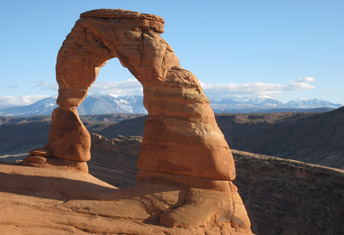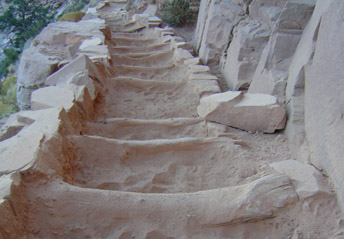National parks: window on America
And meanwhile, with resources stretched so tightly, there is little room for unforeseen events. For instance, when private land that exists within park boundaries comes up for sale, NPS often does not have funds available to purchase that land and enhance the integrity of the park. A few years ago, for instance, as Jeffrey Olson, a spokesperson for the Park Service recalls, private land use in the Black Canyon of the Gunnison in Yellowstone created a controversy. “People are probably still upset about it. Someone owned some really prime real estate in the park and was building trophy homes on it,” he said.
Tight budgets also prove problematic when natural disaster strikes. When a hurricane destroyed a visitor center in Jamestown, Virginia or when the Washington Monument was damaged in the recent earthquake, it was difficult for the Park Service to come up with the money for repairs. As Pitcaithley explains, “money wasn’t budgeted” to take care of emergencies.
Continuing relevance
More than a few park supporters are concerned about whether the parks will continue to appeal to a broad public.
“The biggest issue that the park service has right now is relevancy,” says Barna, “We’re the first to admit that, especially at the large scenic parks, that we are principally a middle-class Caucasian visit.” So attracting visitors from a broader range of socio-economic and racial backgrounds is a top priority of Director Jarvis’s “Call to Action.” He wants the parks to become more involved with local schools and preservation associations through initiatives like additional field trips in the parks and creating more partnership programs.
Many experts agree that the parks need to appeal to a larger audience. Accomplishing this requires expanding the Park Service’s educational lens beyond the history of white Americans, they say, creating new parks that focus on histories of under-represented groups. “We have not done a very good job of telling the story of Latin Americans in this country,” says Barna, continuing, “We have done an appalling job of telling the story of Japanese Americans.”
“We need a comprehensive plan for growth of the park system,” says Ron Tipton of NPCA, “We need a park system that represents the history and culture of this country.”
“If the parks aren’t relevant in the next 50 years,” Barna worries, “if the ethnic and cultural mix of America continues to change, and we don’t change to include everyone, people aren’t going to be willing to pay taxes to support national parks.”
There are a variety of other factors that, many say, mean the original vision of the parks as places of contemplation and recreation is at least as important today as it was a century ago, especially given the specific demands and conditions of a highly technological society. That parks preserve nature is important for two reasons, Smith says: one, for understanding the national history, and, two, for escaping some of the pressures of modern life. “If you think about both our natural and cultural parks, that’s where we find out who we are as a nation,” he says, “you get to see what America was and you get to experience nature unvarnished; you can unplug your iPod, turn off your cell phone, turn off your iPhone, and live life according to the rhythms of nature and not the pulse of economic or social rhythms.”
Barna agrees, saying that Americans need a break from the busy pace of urban life, that they need the leisure and exercise that founders of the park service thought were keys to a healthy and engaged citizenry, “the spiritual health of getting out into nature and getting away from the busy lives they lead.”
Adding to this, Kellett says, “There are more and more people in the U.S. and less and less open wild protected places. Everything that doesn’t get protected will be developed to the point where it loses value. Parks provide the strongest protections for the things that we really care about.”
“Is this a trick question?”
Remapping Debate tried to get a sense of what is actually needed for parks to fulfill a robust vision for their role in society — regardless of budgetary cost.
One issue is simply the logistics of getting Americans to the parks in the first place. An item on many wish lists is a comprehensive public transportation system inside and outside of the parks — a system that would not only cut down on emissions and pollution but also allow those who do not own a car access to large scenic parks. Many Americans live in areas that are far from the iconic parks of the west. Even for those who live close to national parks, access can still be difficult.
Tipton says, for instance, that when the NPCA was conducting research for the State of the National Parks study, Gateway National Recreation Center, some of which is actually within the borders of New York City, was extremely difficult to get to using public transport. When asked what he might do with an unlimited budget, Barna says, “That’s what the future is: how we move people.”


